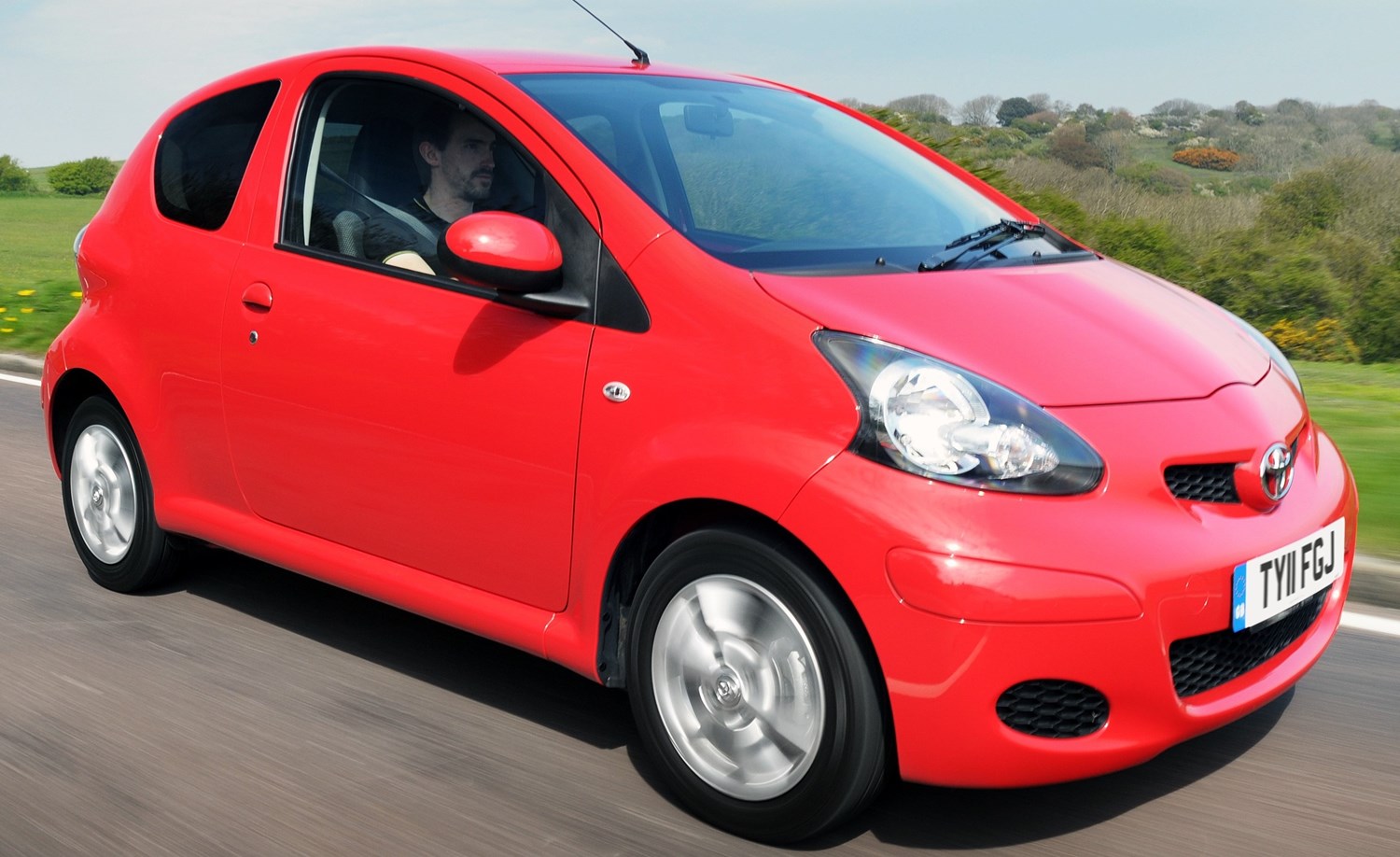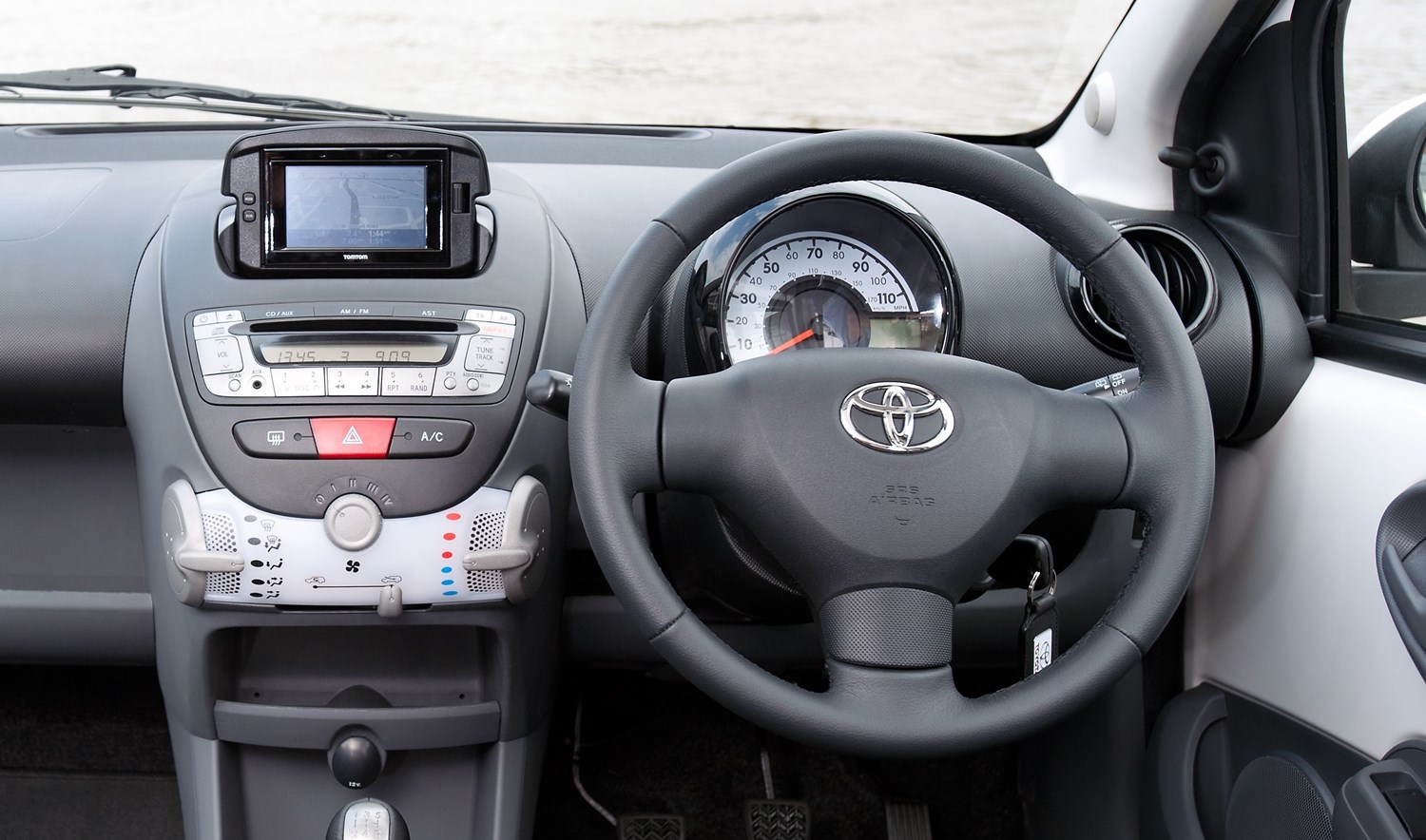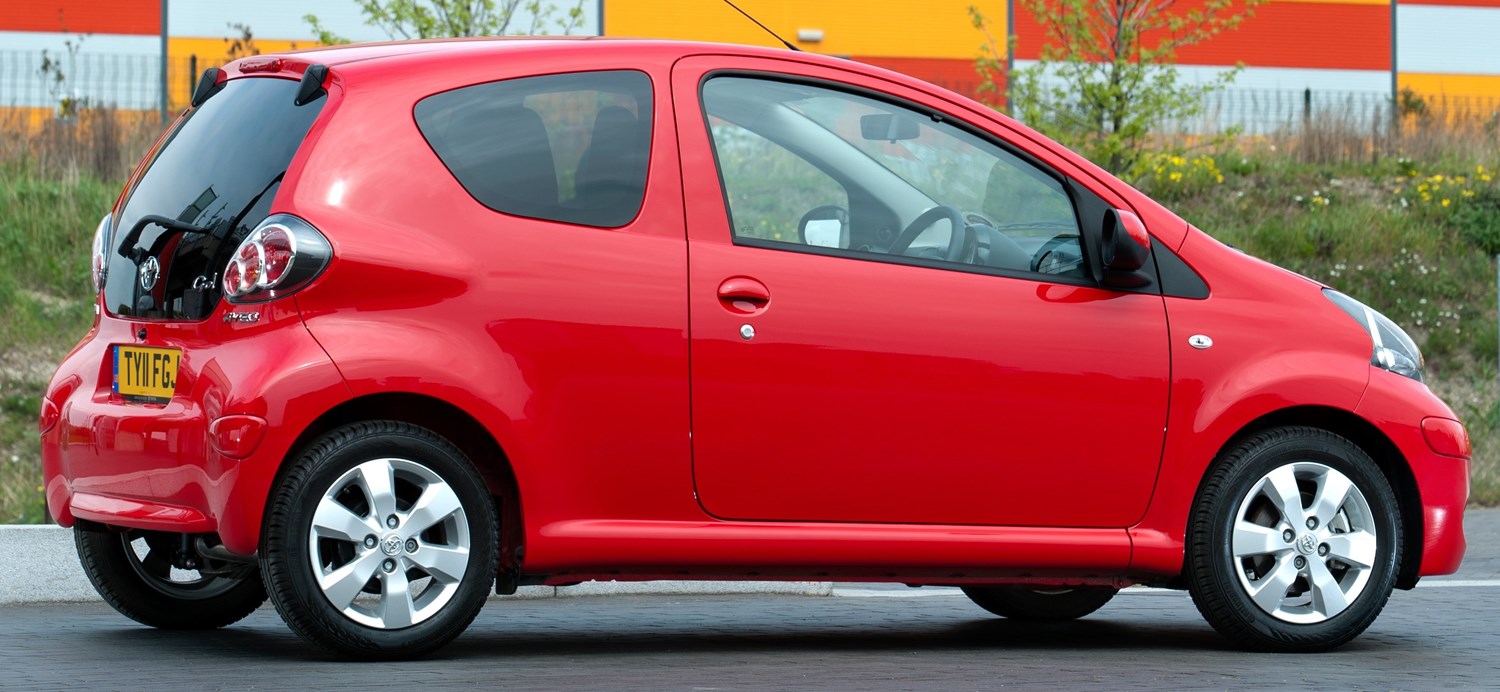Latest model
Arriving in 2014, the current-generation Aygo completely revamped the city car’s image. Whereas before it had been an upright urban runabout, the newcomer looked much more like a small version of a normal supermini.
The big X on the front, however, has been divisive, with some customers loving the bold design and others finding it outlandish and a little too brash. Other than that, though, there’s little about the styling to criticise. The double-bubble roof looks great, and the car is generally well proportioned.
Inside, top-spec models get a touchscreen with smartphone connectivity and a host of steering wheel-mounted audio controls.
There’s also a range of personalisation options for both the interior and the exterior, with customers able to choose from a range of paint jobs, decals and interior trims to really make the car their own. The result is a huge range of choice for new buyers, although some left-field selections can affect the car’s used value. On the plus side, used buyers who can cope with a weird combination could bag themselves a bargain.
Value for money
The basic Aygo X model comes in at £9,135, and for that money you get the standard three-door car with the five-speed manual transmission.
As standard, the car comes with 14-inch steel wheels with hub caps, LED daytime running lights and remote central locking, but not an awful lot else.
Moving up to the mid-range X-Play model costs an extra £1,200, but it provides digital radio, air conditioning and larger wheels, while an automated manual transmission is also offered.
At the top of the range, the X-Clusiv provides 15-inch alloys, a seven-inch touchscreen infotainment system and keyless start, as well as climate control, but it costs more than £13,000.
If you’re looking to spend a little less, however, you can always go for a used example. First-generation cars start at less than £1,000, while an early second-generation car will set you back at least £4,500.
Looks and image
The first Aygos sat quite upright, but the rounded Japanese styling has aged quite gracefully. The bug eyes and protruding tail lights won’t be to everyone’s taste, but it’s testament to how well the design worked that the facelift in 2009 was minor. A second facelift in 2012 changed the bumper slightly, but left much of the car untouched.
The second generation, however, is much more modern, but also much more divisive. Opinion is split over the X graphic at the front, which seems to gain criticism and praise in equal measure.
Inside, the newcomer has a completely revamped cabin, with the firm plastics of the original replaced with glossy trim and, on high-spec models, a sizeable seven-inch touchscreen.
It’s a less fussy dashboard layout, but the touchscreen can be a pain in bright sunlight (especially in convertible models) and it isn’t that easy to use when you’re on the move, necessitating your attention far more than a collection of physical buttons.


